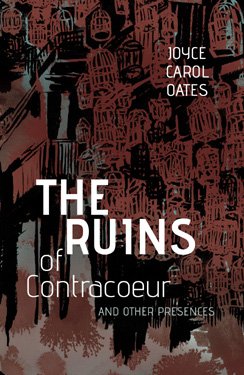At this time of year I do enjoy dipping into some dark tales of gothic mystery and sinister horror. Recent collections of short stories by Joyce Carol Oates that fall into this tradition include “Night Gaunts” and “The Doll-Master”. The six stories which are included in “The Ruins of Contracoeur” also encompass these elements, but as they are written by Oates they include many deeper themes such as challenging family dynamics, the resilience of girls, economic division in society and the heartbreak of grief. The line between the living and the dead becomes blurred as we follow the thoughts and actions of individuals who've been wronged or wronged others. While some seek vigilante justice, there's not always a clear moral compass used by the complicated personalities which inhabit these stories. These prose are teeming with emotion, they create an atmosphere of unease in the reader's imagination and a feeling of suspense with each page that is turned.
The story 'Mr Stickum' is predominantly narrated in the collective voice of a group of teenage girls who carry out deadly revenge upon predatory men. In 'The Cold' we find ourselves disconcertingly aligned with the mind of a grief stricken woman whose experience becomes increasingly hallucinatory. With the story 'Monstersister' we experience an alarming sensation of body horror but we're also left with a melancholy sense of what it'd be like if a distorted version of ourselves were to take our place within our own family. The story 'Commencement' may feel like it's set in the most civilized environment imaginable but it's conclusion is so shocking and barbaric you won't believe what you're reading. 'The Redwoods' is one of the most original ghost stories I've read and the title story 'The Ruins of Contracoeur' builds an environment so menacing I felt terrified for the children trapped in this dilapidated family estate. It also took me back to the territory of Oates' brilliant and wildly imaginative sequence of gothic novels. I found these stories thrilling, complex and haunting.
I hosted the launch for this collection and you can watch Lisa Tuttle, award winning author of science fiction, fantasy and horror in conversation with Oates here: https://www.youtube.com/watch?v=UJfglF6Xyp8


















